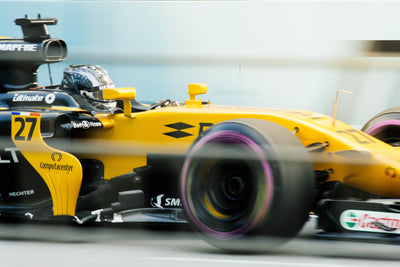Domestic US orders.

Can I Install a Racing Harness in my Car?
By Matt Lambert at Right Motorsport
The thrill of motorsport is a siren's call for many driving enthusiasts. Whether it's the adrenaline rush on the track or the pursuit of precision in performance, there's an undeniable allure to pushing the limits.
For some, this pursuit goes beyond the occasional track day, leading them to consider upgrading their car's safety and performance features. One such upgrade that often comes to mind is installing a racing harness.
However, the decision to install a racing harness in your car is not as simple as it might seem. It raises several important questions: Is it legal? Will it affect the factory safety equipment? Do I need a roll cage?
These questions can make the topic of aftermarket harnesses a bit tumultuous. So, if you're contemplating this upgrade, let's explore the considerations to help you make an informed decision.
Why Do I Need a Racing Harness?
If you've ever found yourself in a spirited driving situation or frequently hit the track, the idea of installing a four-, five-, or six-point racing harness might have crossed your mind. The primary motivation behind this upgrade is to enhance driver retention.
A racing harness firmly holds you in place, allowing you to focus more on driving and less on bracing yourself against lateral forces. It can significantly improve your comfort and concentration, potentially resulting in better lap times and a more enjoyable driving experience.
Additionally, some drivers consider harnesses as an alternative to replacing worn factory seatbelts. If your factory three-point belt has seen better days and is unlikely to perform as expected in a crash, a harness can sometimes be a cost-effective solution.
There are numerous affordable options on the market, making it an appealing choice for those seeking added safety which can be found at www.fastracer.com
What are the Negatives to Installing a Race Harness?
While the idea of a racing harness may be enticing, there are several reasons why it's not always the best choice for street-driven cars:
Safety Testing: Factory seatbelts undergo extensive safety testing to ensure longevity and effectiveness. They are designed to remain safe for the vehicle's entire lifespan. On the other hand, many inexpensive aftermarket harnesses lack the rigorous testing and certifications that factory belts receive.
Legal Implications: Only four-point harnesses that are DOT-approved, like the Schroth Rallye and Takata Drift, should be considered for street-driven cars. However, there are specific requirements for their correct and safe installation, as detailed by Schroth. Using DOT-legal harnesses also typically requires retaining the OEM three-point belts, which can be cumbersome.
Impact Absorption: Street driving involves different types of impacts compared to racing. In a car, your head may hit the roll cage, steering wheel, side window, or roof during a collision. Racing harnesses are designed for track scenarios and may not provide the same level of impact absorption and protection as factory belts.
Submarining/Diving Risk: Factory three-point belts are engineered to prevent submarining, where the body slides under the waist belt during a head-on collision. Racing harnesses, especially non-DOT-approved five- and six-point ones, may not offer the same level of protection against submarining.
Comfort and Convenience: Racing harnesses can be uncomfortable for street driving. They restrict movement, making it challenging to check blind spots, reach controls, or perform everyday tasks like going through drive-thrus. Running them loosely negates their effectiveness.
Engineering and Regulation: Properly installing racing harnesses involves factors such as mounting angles, seat design, mounting points, and more. It requires adherence to engineering guidelines and governmental regulations, which can be complex and may not be practical for street use.
Why Safety Comes First
While the allure of a racing harness is undeniable, it's essential to prioritize safety above all else. If you're not planning to use your car exclusively for racing and aren't prepared to make the necessary modifications and adjustments for safe harness installation, it's advisable to stick with your factory seatbelts. They are designed to provide a balance of safety and comfort for everyday driving scenarios.
Ultimately, the decision to install a racing harness in your car should be a well-informed one. It's crucial to weigh the benefits against the potential drawbacks and consider whether it aligns with your driving habits and safety requirements. Remember, safety should always be the top priority on the road or the track.



Leave a comment